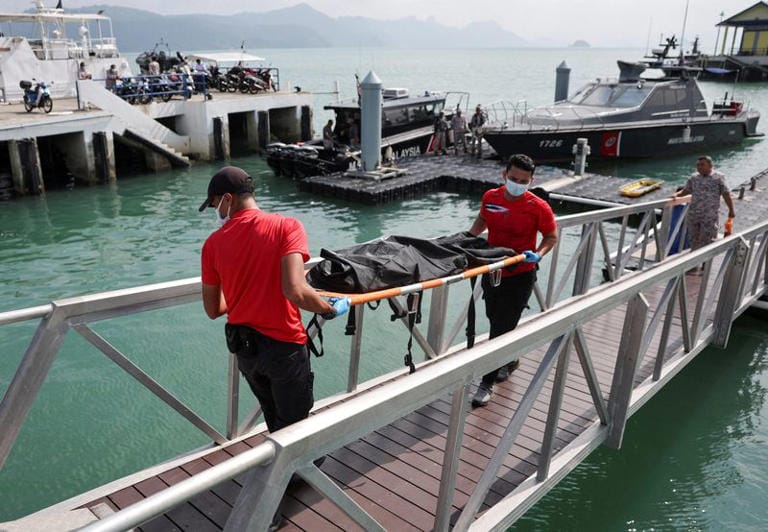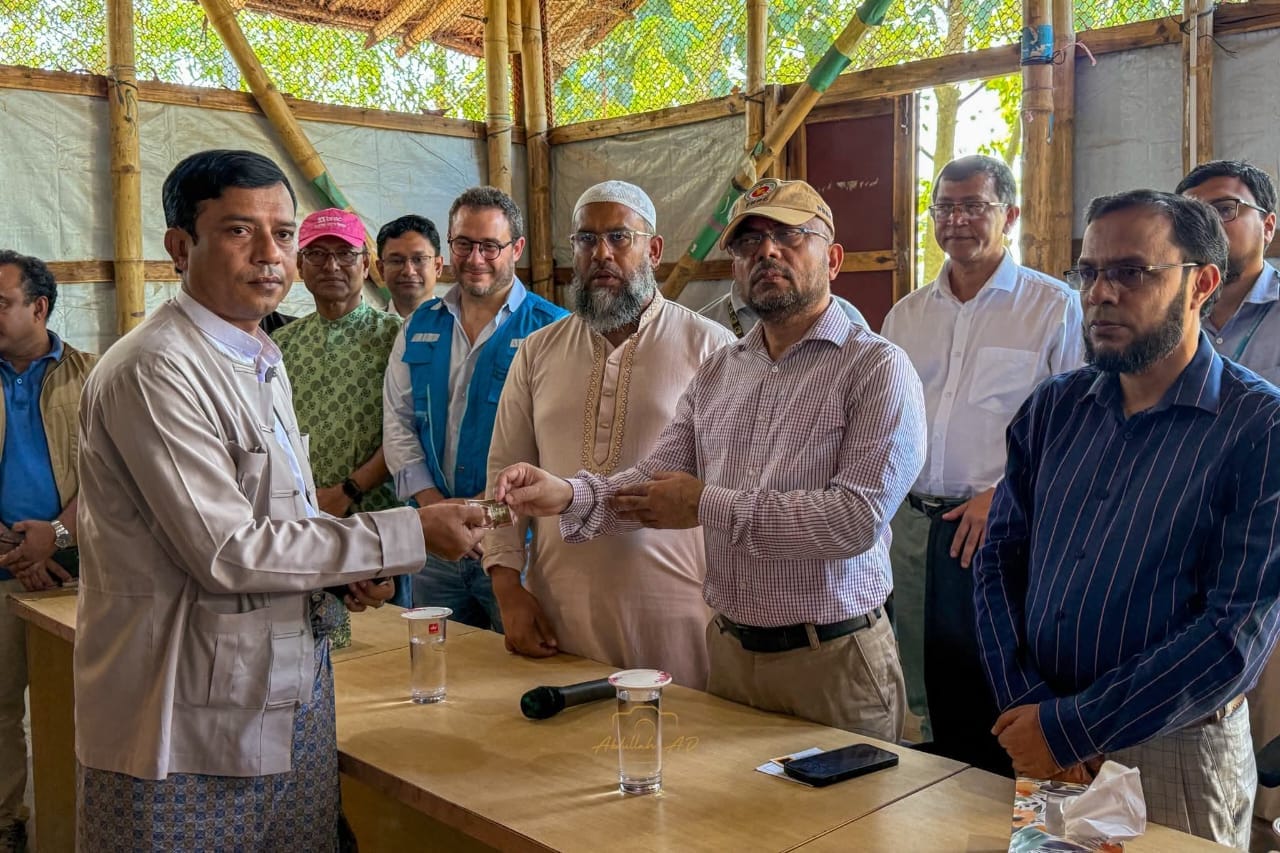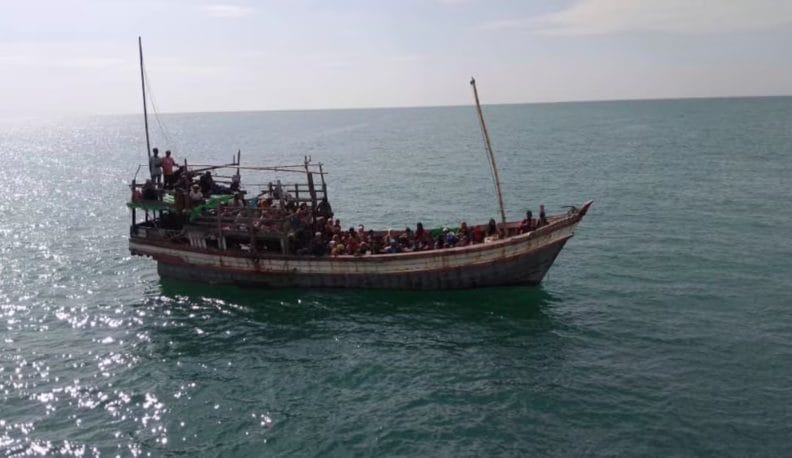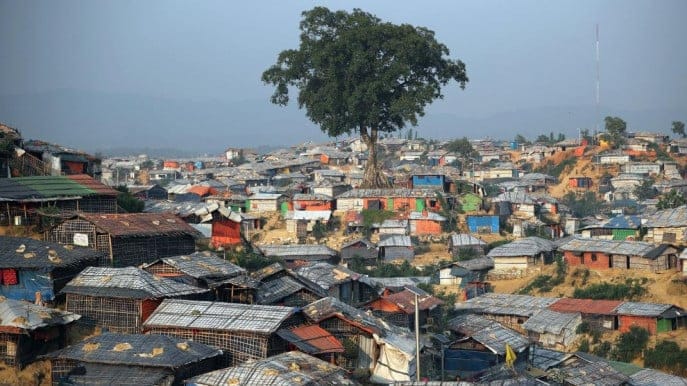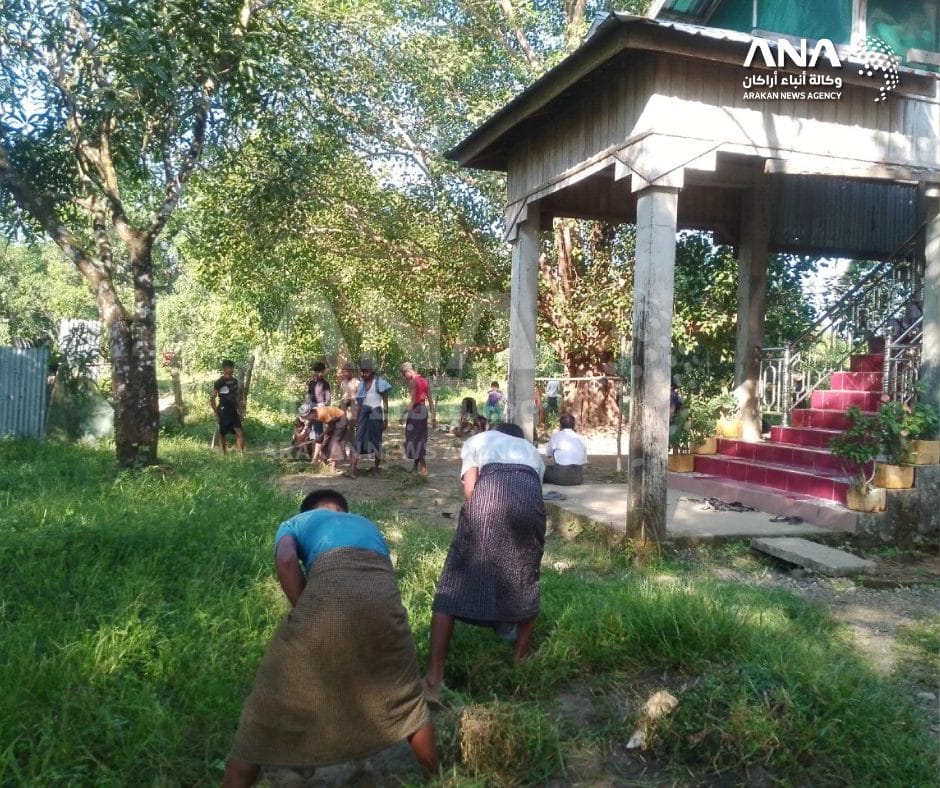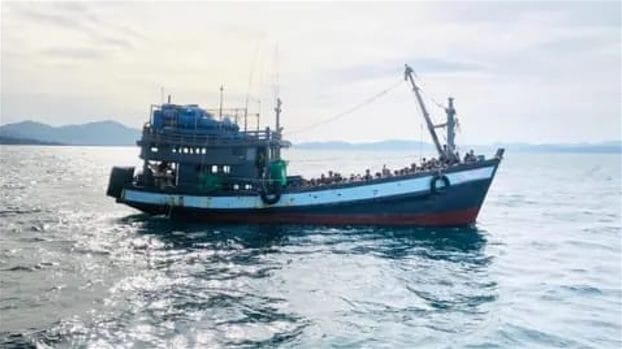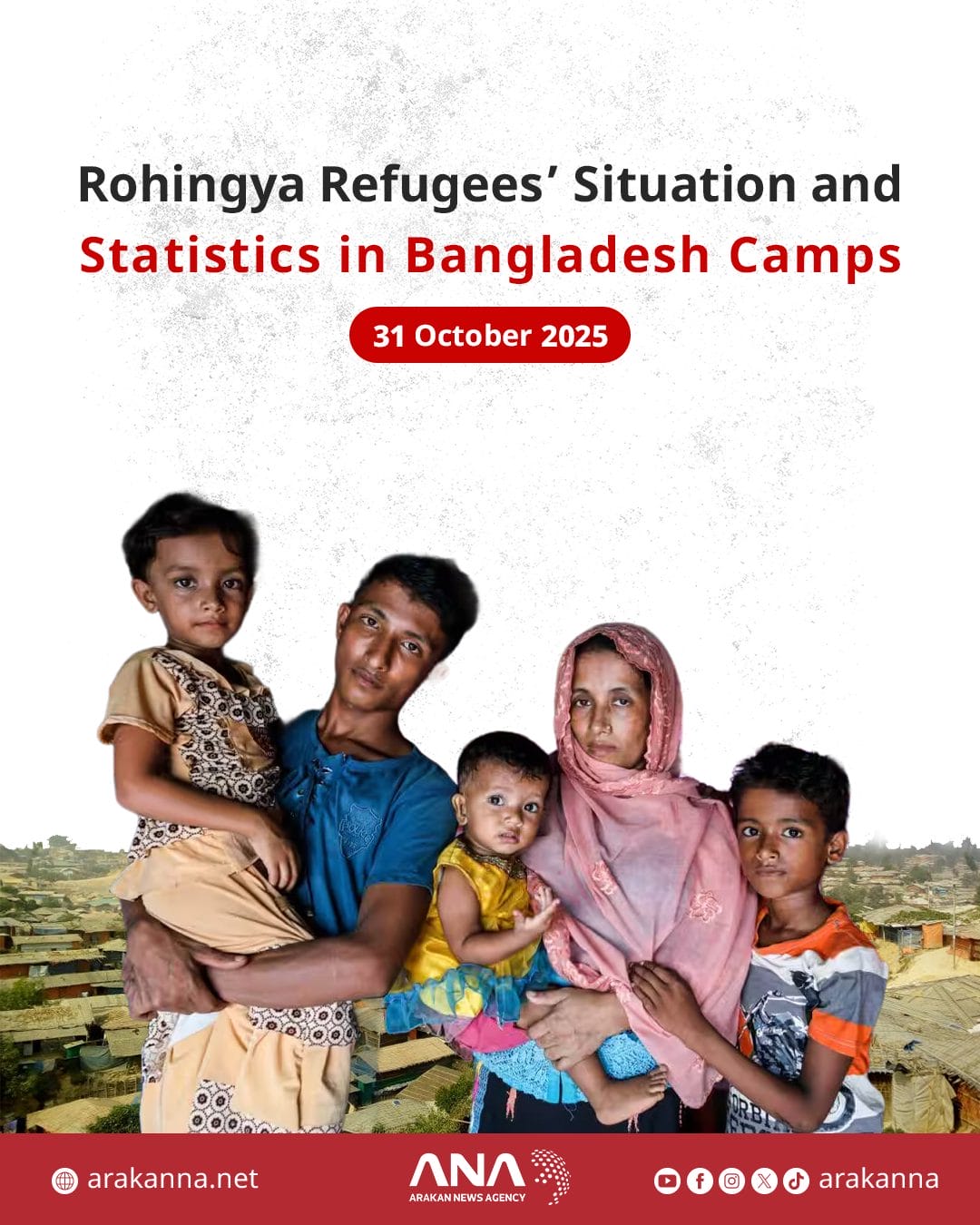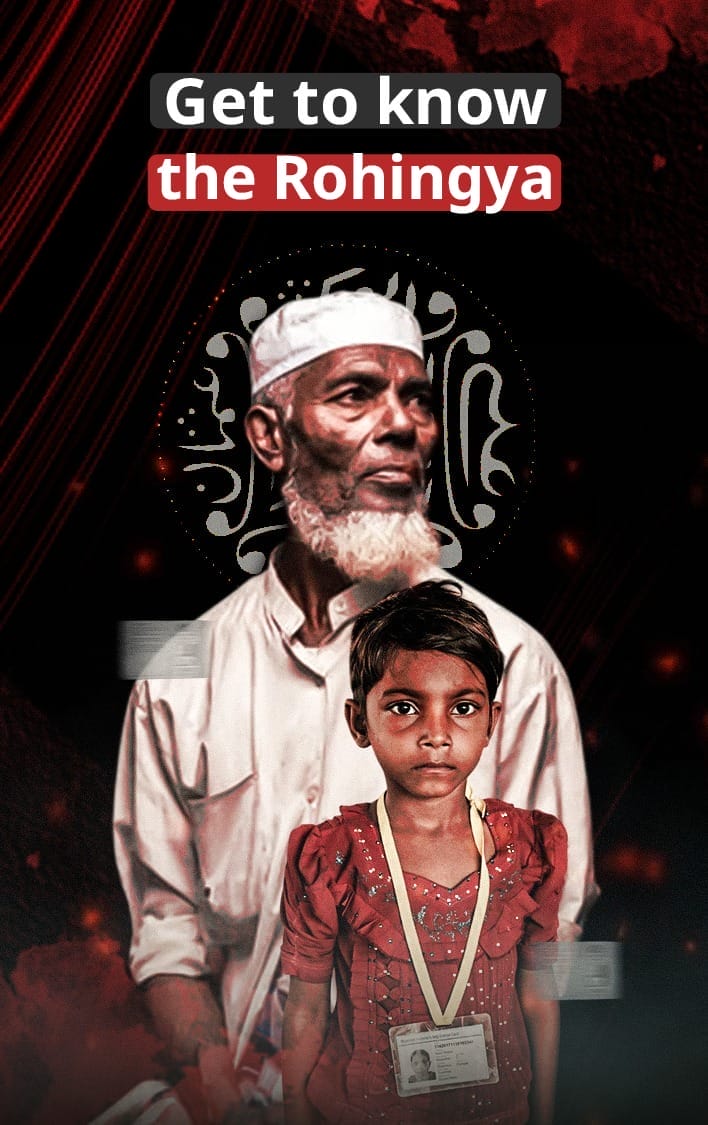Arakan News Agency
An investigation published by the American network “CNN” on Sunday revealed how India planned and executed a forced deportation of forty Rohingya refugees to Myanmar by casting them into international waters last May, after gathering them under the pretense of collecting biometric data.
The network conveyed the details of what happened to the refugees through the words of their relatives who are still in India, including the story of a young 20-year-old Rohingya woman named Asma. Her father, Mohamed Ismail, told the network that she was deceived and forcibly deported from India to Myanmar a few days before her wedding and that his sister was also deported, along with others.
The family fled Myanmar to India eight years ago, where the father worked as a garbage collector and Asma attended school in New Delhi. But a few days before her wedding, she and 39 other Rohingya refugees in the city were asked to go to the Indian authorities to provide their biometric information for new identity cards, after which they disappeared.
The network explained that the fate of the refugees became clear only after three full days when the families were able to make a phone call with the refugees and learned they were put on a plane, then forced to board a boat blindfolded before being pushed into the Indian Ocean waters and told to swim toward the nearest shore, which was Myanmar’s. 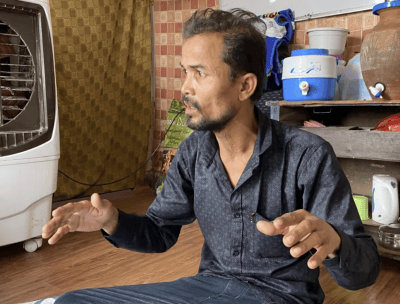
The investigation, based on testimonies from India, Myanmar, and Bangladesh, and supported by data on air flights and maritime shipping, revealed that the Indian government secretly collected and deported 13 women and 27 men without the due legal process, in violation of Indian laws, to a country where they are widely unwanted. “CNN” stated that it reached out to several government bodies and institutions affiliated with the Indian authorities but received no response.
During his interview with the network, Mohamed said his daughter and sister were among the deportees, and he had heard no news about them since they were deported four months ago. He added, “I did nothing wrong; I just came to seek asylum… How could they take my daughter from me? If we must be deported, we should have been deported together.”
Another Rohingya, named John Anwar, was detained on the same day, sharing similar details via a phone call with his brother after arriving in Myanmar. His brother shared the recording of it, and Anwar said in the recording that they were taken for a medical examination after providing their biometric fingerprints. He added, “We realized something was wrong because they never performed a medical examination when collecting biometric information before,” and the network clarified that soon afterward, they were transferred to an airport, noting the same details were mentioned in a separate phone call made by another group member with his brother, named Noor Alamin.
Noor Alamin said in an interview with the network that his brother told him the flight lasted approximately three and a half hours. When the plane landed, he saw a signboard written Port Blair in the Andaman Islands, roughly midway between India and Myanmar. The network pointed out that the duration of the flight mentioned by the refugee matches the usual commercial flight times from New Delhi to Port Blair.
Numbers and Indications
Flight tracking data reviewed by “CNN” indicate that an Airbus A321-211 passenger plane took off from Ghaziabad Airport, located outside New Delhi, around 2:20 PM on May 7. According to its flight record, it took off and landed in Ghaziabad with a total flight time of 7 hours and 37 minutes. “CNN’s” analysis of the data shows the plane flew in a southeast direction for about three and a half hours, and the plane’s transponder was turned off when it was about 50 miles away from the Andaman Islands.
About 50 minutes later, the device was turned back on, showing the plane returning to mainland India. According to the Flightradar24 website for flight tracking, this plane is operated by the Indian Defense Research and Development Organization (DRDO), a branch of the Indian Defense Ministry. “CNN” contacted the organization for a comment on the flight but received no response.
Just a few steps from Port Blair Airport lies the main port serving the Andaman Islands. Satellite data and public records show the port has several piers serving military, coast guard, and commercial ships, including passenger ferries. 
The refugee told his brother that the group was transferred to a large white ship with two decks after leaving the plane, but he couldn’t identify the ship’s name or type. He continued that the group’s eyes were blindfolded and threatened by men carrying weapons who told them they would shoot anyone who raised their head. He added, “One of the officers said, ‘Your lives are worth nothing, you do not have a homeland, even if we kill you, no one will object,'” and that after several hours they were divided into two smaller boats, and after about four hours the boats stopped in the dark, far from the land, but they tied a rope to a tree on the shore and ordered them to get into the water.
According to “CNN,” data extracted from the VesselFinder website indicated that 24 civilian ships left the evening of May 7 and the morning of May 9, including 12 passenger ships from Port Blair Port, but data showed that none of these ships headed towards Myanmar, whose nearest shores are about 300 miles away during that period. AIS data for Indian navy ships are not publicly available.
“CNN” contacted both the Andaman and Nicobar Islands Command of the Indian Army, responsible for the area, and the chief superintendent of Port Blair but neither responded to requests for comment.
A report by Human Rights Watch stated that Indian authorities had deported dozens of Rohingya to Bangladesh and Myanmar since last May without legal protection while hundreds have been arbitrarily detained. Numerous media reports confirmed the incident of casting the Rohingya into international waters in May and noted ongoing forced pushes of the Rohingya across the border into Bangladesh.
India lacks a national policy or law regarding the status and treatment of refugees and is not a signatory to the 1951 Refugee Convention. The number of Rohingya in India is estimated at about 40,000, with more than half registered with the UNHCR.
Over a million Rohingya have fled from the state of Arakan in western Myanmar in recent years after the Myanmar army launched a genocide campaign against them in 2017, and the Arakan Army, a Buddhist militia, launched a military campaign in November 2023 to control the state, also subjecting them to violence, displacement, and forced recruitment. Most of them reside in crowded Bangladesh camps, while some seek to move to other countries in search of better living conditions.


